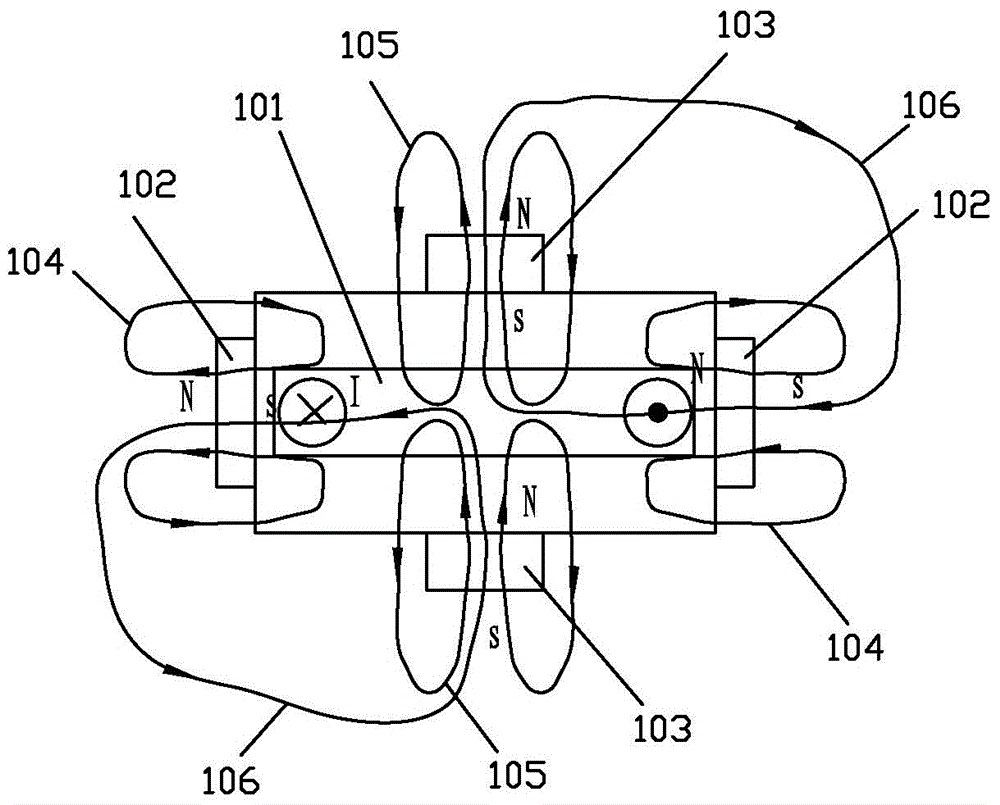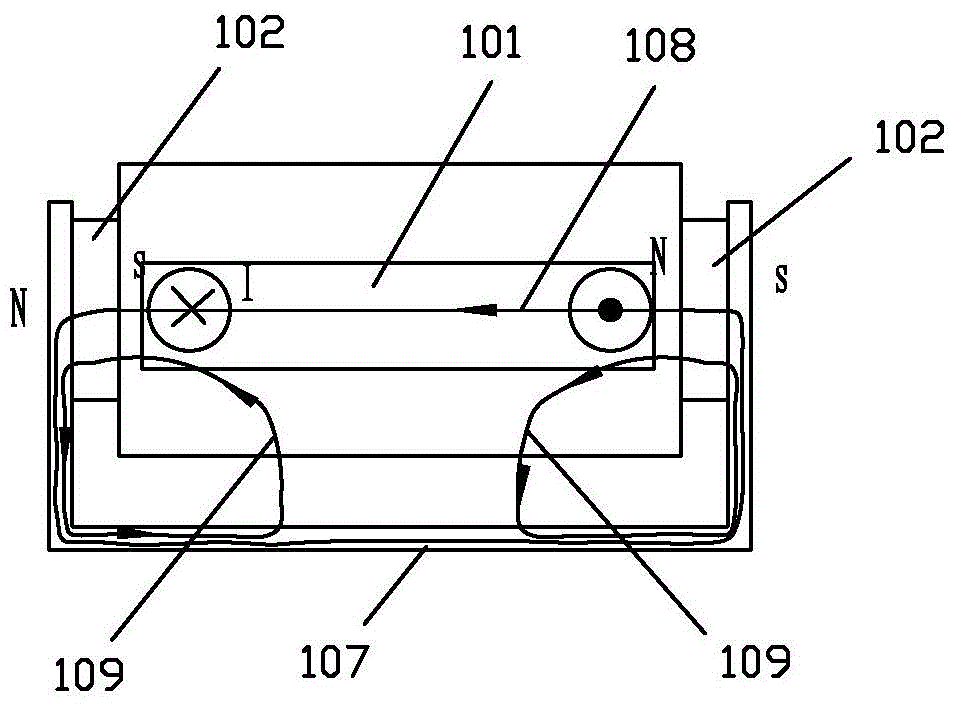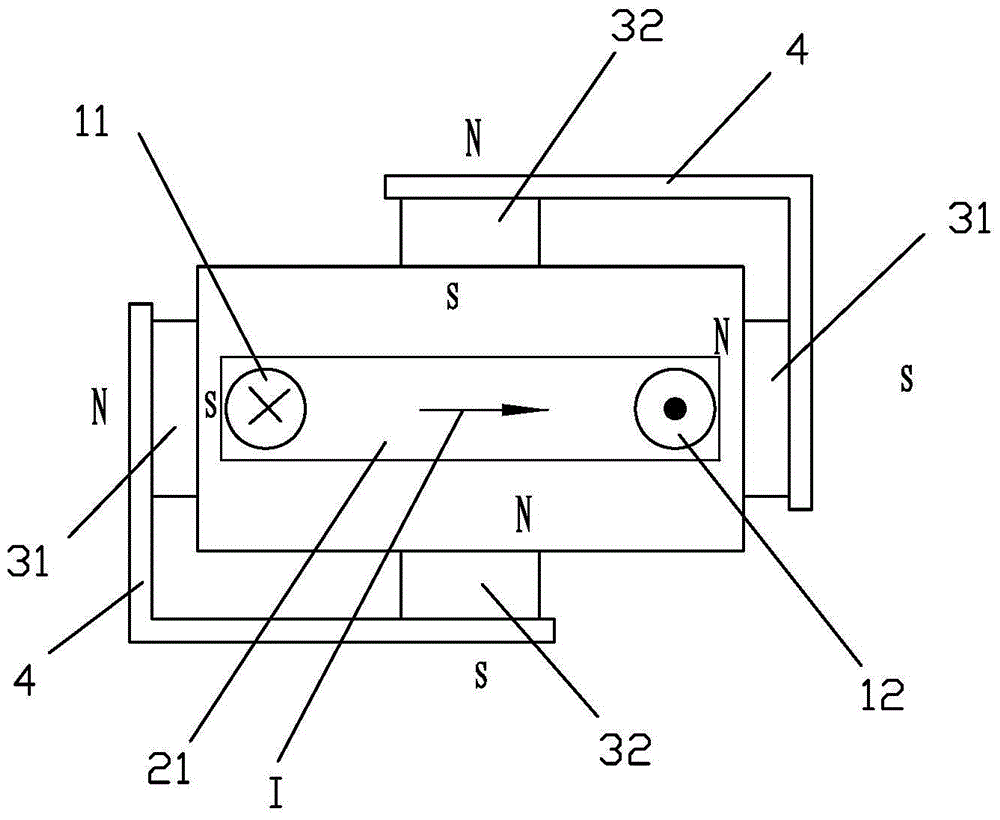An arc-extinguishing magnetic circuit resisting/matching electrodynamic repulsion and its DC relay
An electric repulsion and arc extinguishing technology, applied in electromagnetic relays, electromagnetic relay details, relays, etc., can solve the problem of low magnetic utilization rate of magnetic steel, and achieve the effect of improving magnetic utilization rate and avoiding abnormality.
- Summary
- Abstract
- Description
- Claims
- Application Information
AI Technical Summary
Problems solved by technology
Method used
Image
Examples
Embodiment 1
[0029] see Figure 3 to Figure 6As shown, an arc extinguishing magnetic circuit of the present invention that resists / matches electrodynamic repulsion includes a contact part, and the contact part includes two static contacts that are respectively used to provide current inflow and outflow, that is, the static contact 11 and the static contact head 12 and a moving reed 21, the two ends of the moving reed 21 are respectively matched with two static contacts 11, 12, when the moving and static contacts are in contact together, the current I flows from the static contact 11 , after passing through the moving reed 21, it flows out from the static contact 12; a first magnetic steel 31 is respectively provided on the outside of the two ends of the length of the moving reed 21; A piece of second magnetic steel 32; wherein, the polarities of the two first magnetic steels 31 are opposite to each other, and the polarities of the two second magnetic steels 32 are also opposite to each oth...
Embodiment 2
[0041] see Figure 7 to Figure 9 As shown, the arc extinguishing magnetic circuit of the present invention that resists / matches electrodynamic repulsion and its DC relay differs from Embodiment 1 in that, among the two second magnets 32, one of the second magnets The N pole of 32 faces the moving reed, and the second magnetic steel 32 facing the moving reed is arranged on the left side of the current flow direction of the moving reed 21, so as to match the ampere force generated by the magnetic fields of the four magnetic steels. The electric repulsion between the moving and static contacts increases the separation force between the moving and static contacts.
[0042] Because the positions of the two second magnetic steels 32 change, when the power is applied, the moving reed 21 flows through the current I. According to the left-hand rule, the moving reed 21 is subjected to a downward ampere force F32 under the action of the magnetic field. The force F32 is opposite to the p...
PUM
 Login to View More
Login to View More Abstract
Description
Claims
Application Information
 Login to View More
Login to View More - R&D
- Intellectual Property
- Life Sciences
- Materials
- Tech Scout
- Unparalleled Data Quality
- Higher Quality Content
- 60% Fewer Hallucinations
Browse by: Latest US Patents, China's latest patents, Technical Efficacy Thesaurus, Application Domain, Technology Topic, Popular Technical Reports.
© 2025 PatSnap. All rights reserved.Legal|Privacy policy|Modern Slavery Act Transparency Statement|Sitemap|About US| Contact US: help@patsnap.com



